
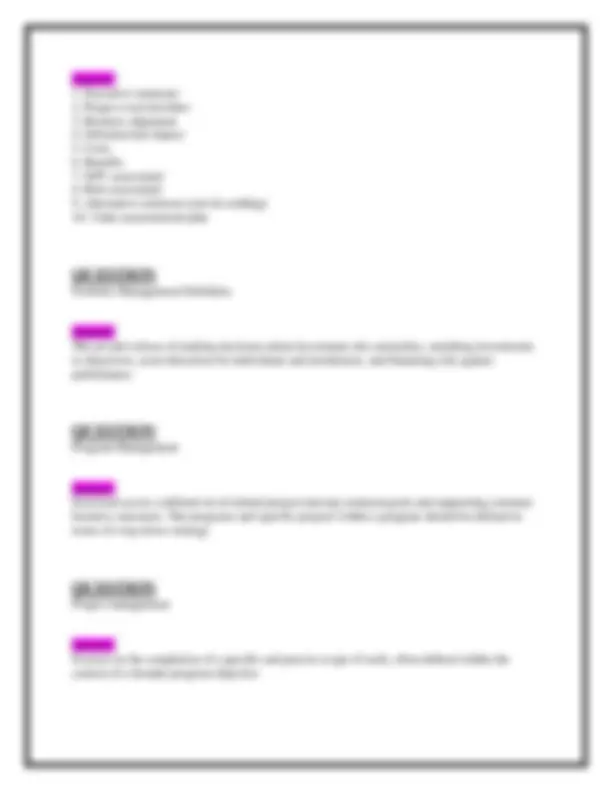
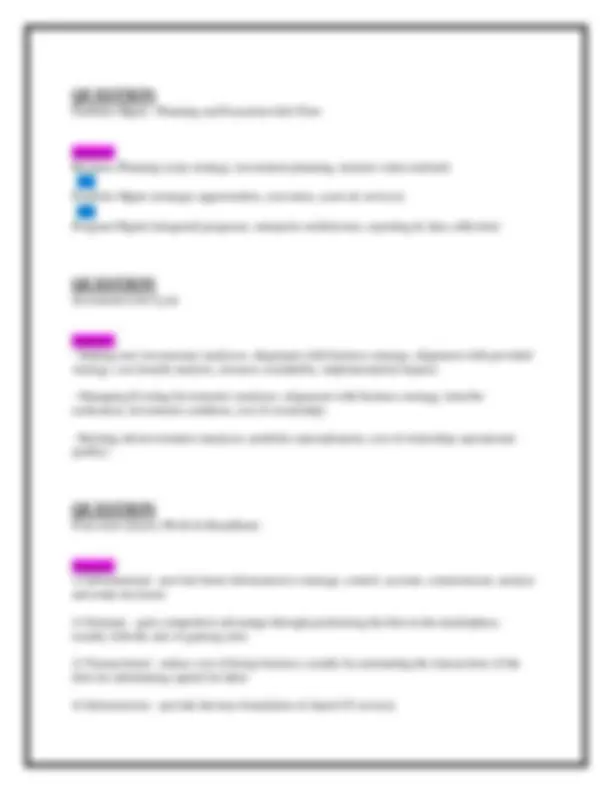
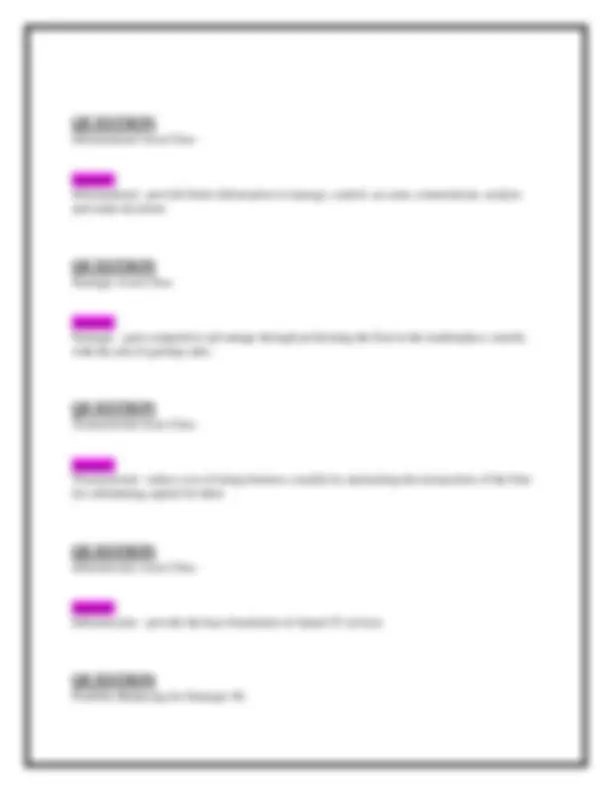
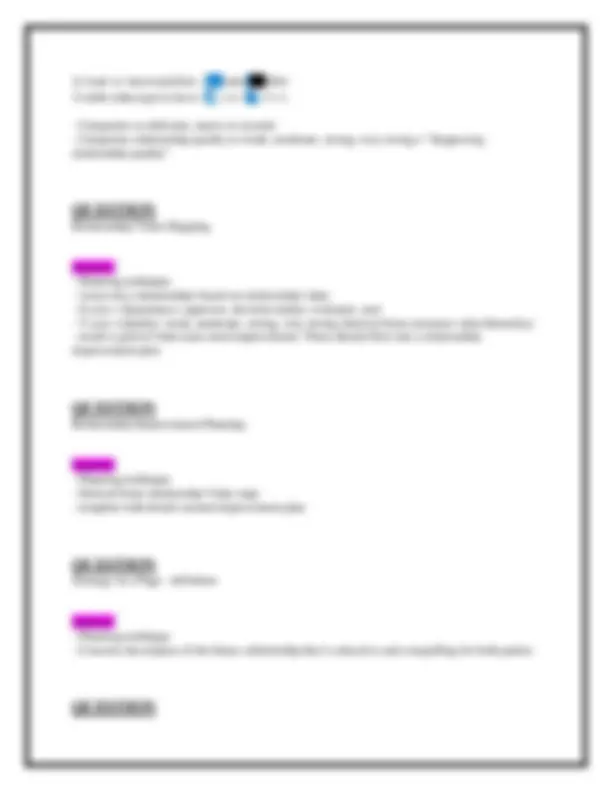
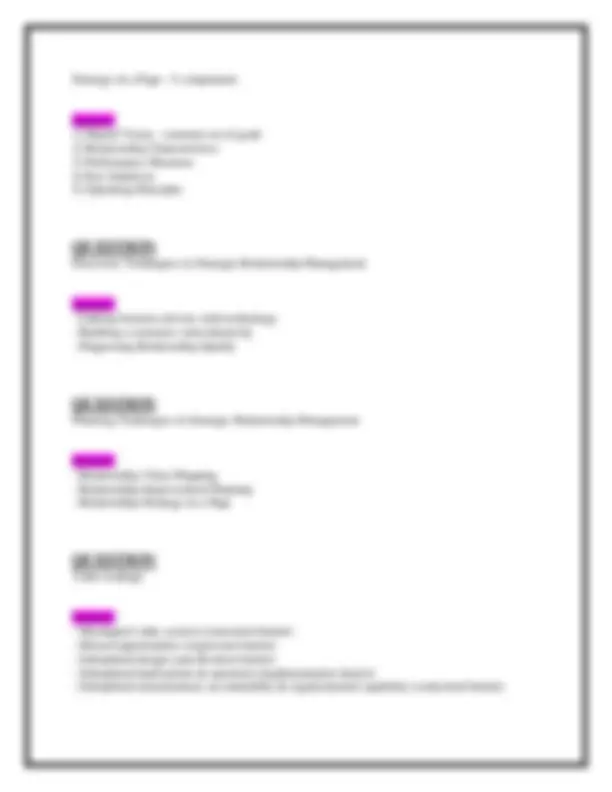
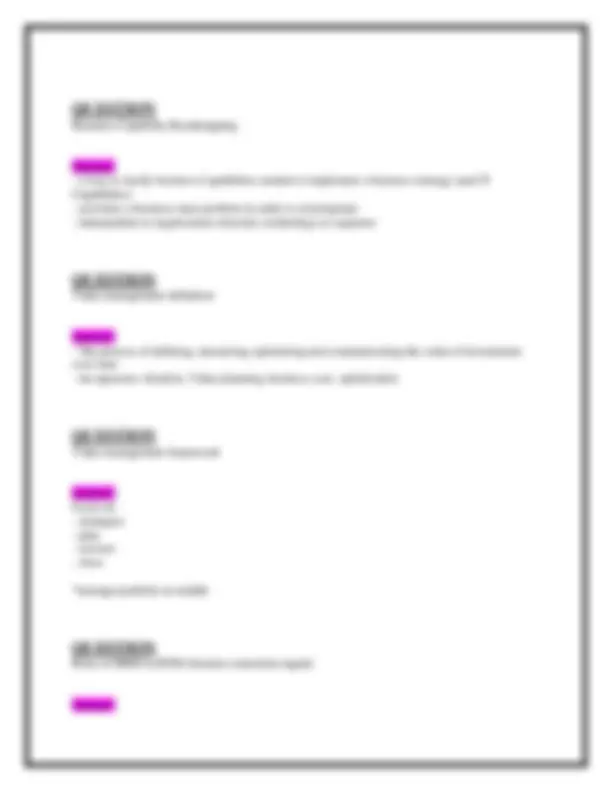
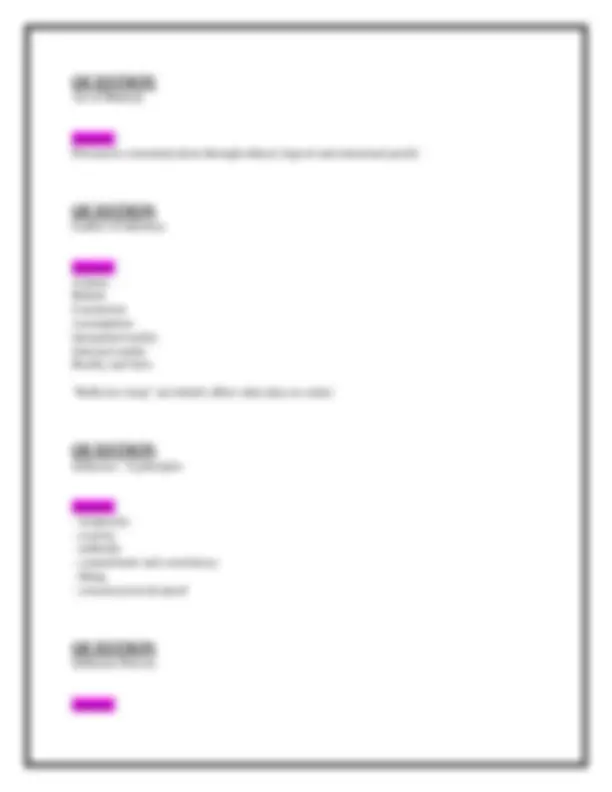
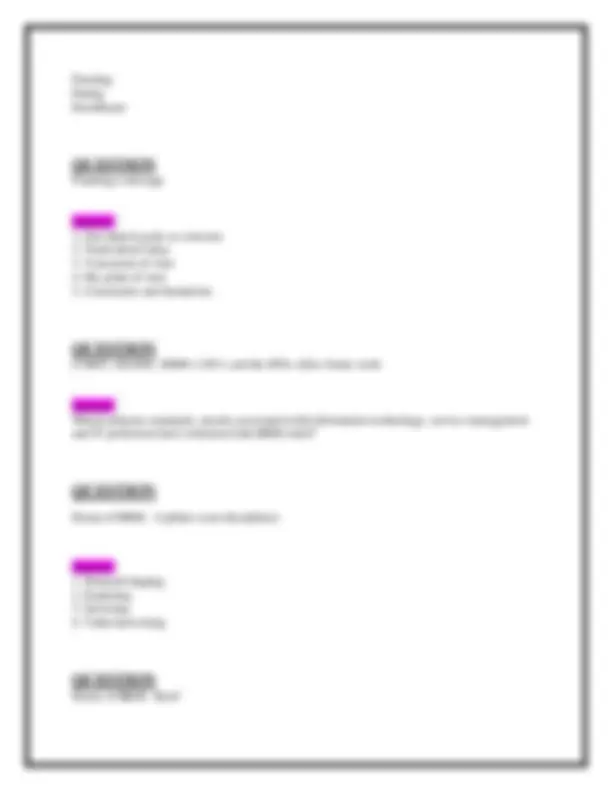
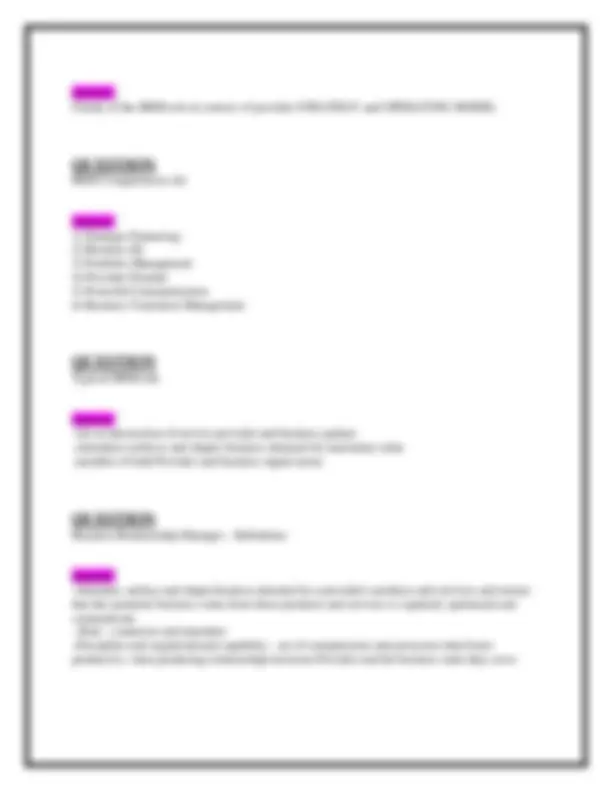
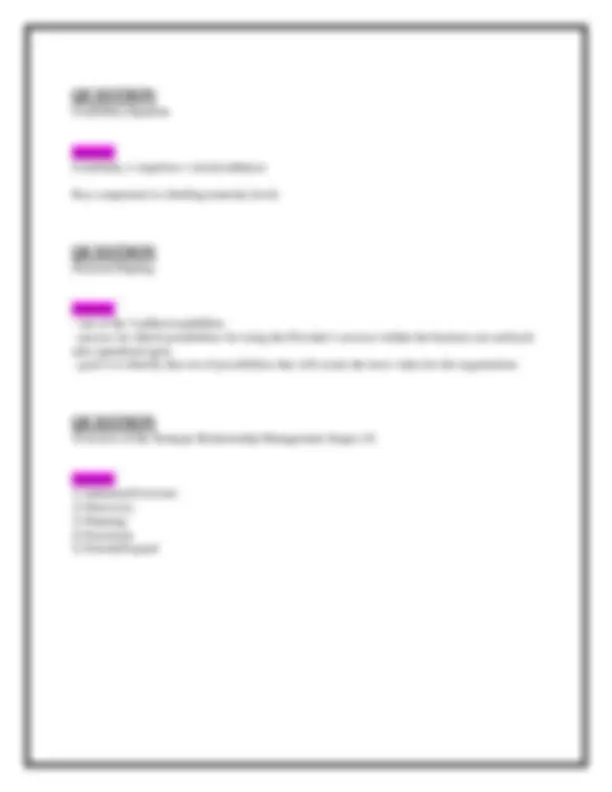


Study with the several resources on Docsity

Earn points by helping other students or get them with a premium plan


Prepare for your exams
Study with the several resources on Docsity

Earn points to download
Earn points by helping other students or get them with a premium plan
Community
Ask the community for help and clear up your study doubts
Discover the best universities in your country according to Docsity users
Free resources
Download our free guides on studying techniques, anxiety management strategies, and thesis advice from Docsity tutors
QUESTION Business outcomes definition Answer: Drive scope, priorities, trade-offs, and benefit realization decisions QUESTION Characteristics Of Business outcomes Answer: - results focus - important - discrete - see the detail - translatable - measurable QUESTION Business outcomes and SMART goals - characteristics Answer: -Specific (who, what, where, when, why)
Typology: Exams
1 / 18

This page cannot be seen from the preview
Don't miss anything!











Business outcomes definition Answer: Drive scope, priorities, trade-offs, and benefit realization decisions
Characteristics Of Business outcomes Answer:
Business outcomes and SMART goals - characteristics Answer:
Value Management Process (5 stages) Answer:
Idea document Answer: Used in Stage 1 of value management process - Capture Value Ideas Idea, stakeholders, definition, consequences, etc
Value Plan Answer: Stage 2 of value management process - Create Value Plan Key deliverables:
Business case components (10)
Portfolio Mgmt - Planning and Execution Info Flow Answer: Business Planning (corp strategy, investment planning, monitor value realized) ⬛ Portfolio Mgmt (strategic opportunities, execution, assets & services) ⬛ Program Mgmt (integrated programs, enterprise architecture, reporting & data collection)
Investment Life Cycle Answer:
Four asset classes (Weill & Broadbent) Answer:
Informational Asset Class Answer: Informational - provide better information to manage, control, account, communicate, analyze and make decisions
Strategic Asset Class Answer: Strategic - gain competitive advantage through positioning the firm in the marketplace, usually with the aim of gaining sales
Transactional Asset Class Answer: Transactional - reduce cost of doing business, usually by automating the transactions of the firm for substituting capital for labor
Infrastructure Asset Class Answer: Infrastructure - provide the base foundation of shared IT services
Portfolio Balancing for Strategic Fit
Business Transition Management Definition Answer: A deliberate approach for managing the human dynamics before, during and after implementing a business change initiative in order to prevent "business value leakage"
Linking Business Drivers with Technology Answer: Discovery technique
Solution-based vs Value-based Discussions Answer: Solution-based: start with what we provide and connect that to a customer problem Value-based: start with customer's most pressing problems and needs (preferred)
Customer Value Hierarchy Answer:
Relationship Value Mapping Answer:
Relationship Improvement Planning Answer:
Strategy on a Page - definition Answer:
Business Capability Roadmapping Answer:
Value management definition Answer:
Value management framework Answer: Cycle of:
Roles of BRM in BTM (business transition mgmt) Answer:
Gleicher's OCM formula Answer: Organizational change occurs when... (U x V x FS) > R U = Urgency V = Vision FS = First Steps R = Resistance
How pain drives change Answer:
3 things needed to engage people in change Answer:
Art of Rhetoric Answer: Persuasive communication through ethical, logical and emotional proofs
Ladder of inference Answer: Actions Beliefs Conclusion Assumptions Interpreted reality Selected reality Reality and facts "Reflexive loop" our beliefs affect what data we select
Influence - 6 principles Answer:
Influence Process Answer:
Framing Dialog Enrollment
Framing a message Answer:
COBIT, ISO/IEC 20000 - 1:2011 and the SFIA skilss frame work Answer: Which industry standards, mostly associated with information technology, service management and IT profession have referenced the BRM roled?
House of BRM - 4 pillars (core disciplines) Answer:
House of BRM - Roof
3 BRM Metaphors Answer:
High Level Capability Model (3) Answer:
Business-Provider Maturity Model Answer:
What is BRM responsibility for Value Optimization? (RACI) Answer: Responsible
BRM Related Standards (3)
Answer:
Business Relationship Maturity Model Answer:
Business-Provider Alignment Model Answer:
Business-Provider Alignment Model - Barriers Answer: